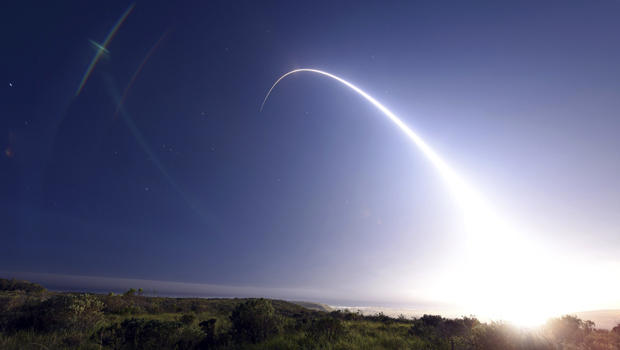
The US military has conducted a missile defense test that took place at the Vandenberg Air Force Base in California. The test was successful according to U.S officials, after an upgraded long-range interceptor missile directly collided with its target—a mock intercontinental ballistic missile (ICBM).

The simulated attack is likely a response to North Korea’s increased missile testing. North Korea is widely believed to be developing an ICBM capable of reaching the US mainland. Should the nation launch an attack that threatens the US, South Korea, or Japan – US defensive policy calls for the missile to be shot down.
The Director of the US Missile Defense Agency, Jim Syring, called the United States’s Ground-based Midcourse Defense (GMD) system “vitally important to the defense of our homeland.”
“Tuesday’s test demonstrates that we have a capable, credible deterrent against a very real threat”, Syring said. It also marks the nation’s first live-fire test against a simulated ICBM. Before Tuesday, the most recent test was conducted in 2014. In the past, intercepting an ICBM has proven incredibly difficult—akin to hitting one bullet with another at an exceptional distance, officials say. Since 1999, the GMD system has hit its target in just nine out of 17 tests, with many tests suffering from mechanical difficulties.
Philip Coyle, a senior fellow at the Center for Arms Control and Non-Proliferation, said that the test now marks “two successes in a row”, but adding that “only two of the last five attempts were successful”. “In school, 40 percent isn’t a passing grade. Based on its testing record, we cannot rely upon this missile defense program to protect the United States from a North Korean long-range missile”, Coyle added.
In 2016, a report from the Pentagon arrived at a similar conclusion. “GMD has demonstrated a limited capability to defend the U.S. homeland from small numbers of simple intermediate-range or intercontinental ballistic missile threats launched from North Korea or Iran,” the report said. Since 2002, the United States’s missile defense system has cost the nation an estimated $40 billion. Under the Trump administration’s budget proposal for 2018, the Pentagon has requested another $7.9 billion for the Missile Defense Agency, including $1.5 billion for the GMD system.
US officials have also stated that the nation is developing additional methods to thwart a missile attack, including cyber-security assessments. Captain Jeff Davis, a Pentagon spokesman, said the latest test is only “one element of a broader missile defense strategy that we can use to employ against potential threats”. The nation’s Terminal High Altitude Area Defense (THAAD) anti-missile system is also designed to counter short, medium, and intermediate range missile threats. Like Tuesday’s missile defense test, the program aims to intercept North Korean missiles mid-flight.

Be the first to comment